Mitchell Toews's Blog, page 6
April 10, 2023
Nettie Wiebe- A Canadian Woman of Influence
A great article from a friend’s blog.
I learned about a community-minded, influential Canadian academic and passionate activist named Nettie Wiebe from an inspiring story about her told in graphic novel style by Jonathan Dyck and Josiah Neufeld in the most recent issue of Broadview Magazine.
Nettie a university philosophy student was spending the summer at home on her parent’s farm in Warman Saskatchewan in 1976 when she discovered that not only her family but others in the area were being approached by a provincial crown corporation to sell their farms to Eldorado Nuclear so they could build a uranium refinery in the area.
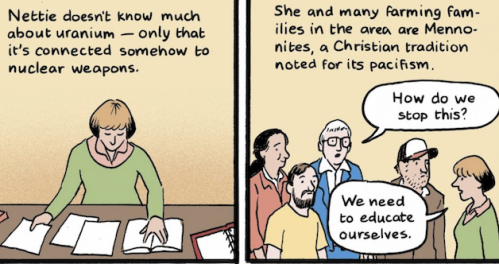 Story panels by Jonathan Dyck and Josiah Neufeld from the home page of Broadview Magazine
Story panels by Jonathan Dyck and Josiah Neufeld from the home page of Broadview Magazine
Nettie researched and discovered that uranium could be used to build nuclear weapons. Nettie was a Mennonite who believed in pacifism and so the thought of selling land to a company that might make weapons was unsettling to…
View original post 310 more words
March 23, 2023
Steinbach Then and Now
I was born in Steinbach, Manitoba and spent more than fifty years there, in a variety of roles. I’ve also lived in Victoria and Winnipeg, and in Chilliwack from 2007-2016. We’ve lived in the Whiteshell for the last seven years. My forthcoming collection of short stories, “Pinching Zwieback: Made-up Stories From the Darp” is drawn in part from my lived experiences in Steinbach. I also share local legends, and (with permission) the experiences of others. It’s fiction but the writing has its underpinnings in memoir and history.
Since 1955, the nature of the town has changed. Or so I’m told. When I try to reconcile the Steinbach I knew so well with the Steinbach that seems to be emerging now, I feel confused and see many conflicting signals about the true nature of the place. It’s complicated.
Steinbach was a remarkably homogenous place of between 3,000 and about 10,000 residents during my tenure. It was—especially in my childhood—a community in which I had deep roots and numerous connections. I was known to or related to almost everyone in town. I have many memories, fond and less so, that give me a broad base from which to examine my hometown. The Steinbach of today is demographically different than that old two-traffic-light prairie outpost where a locked door was as rare as a clegywoman.
Recent articles and op-eds suggest that “this is not your Grandfather’s Steinbach” and yet, I am skeptical. Partly because of what my gut tells me and partly because there’s a certain PR ring to the tone. (I should know, having spent a few years on the Chamber of Commerce, pounding the table with my out-sized Loewen Windows fist.) Certainly, there is still a strong Mennonite presence in “the Stein,” but has that cohort given up its control and sway? Has Steinbach managed to keep the good and discard the bad and the outdated? Good question. The city’s well-deserved and continued reputation for its people’s generosity, its shifting demographics and growing diversity, and a seemingly more vocal progressive sector, even among Mennonites, appear to suggest that the place is changing in a positive fashion.
The fact is, Jan and I no longer live in Steinbach and although we have plenty of family and friends in town and we are “home” quite often (funerals and family gatherings) we can’t really offer a current opinion. I have vivid memories of my 50+ years as a Steinbacher, but, “What’s it REALLY like now?” I ask myself. My recent reading of the book “Shelterbelts” by Jonathan Dyck (Conundrum Press) asks many questions that don’t sound too different from the ones I pose in my book, even though my stories are set mostly in the 50s, 60s, and 70s while “Shelterbelts” is more contemporary.
As I said, “it’s complicated.”
How to determine what the town’s true identity is now? Here’s the list I came up with. It’s a kind of “follow the money” equation. I reason that by identifying who holds the real power in the community, I can find the clearest indicator of how, how much, since when, and why Steinbach has changed, and in what ways. Are “the quiet in the land” really quiet in Steinbach?
Banking & Finance. Which Steinbachers (or outsiders?) run the show? Who holds the purse strings? Who owns what? Who’s in the corner office? What’s the make-up and demographic profile of the most powerful C-suite officers?Industry & Commerce. What sectors drive the local economy? Who are the players? What is their background? Who are the employers and who are the employees?Education. Who builds the schools? Who controls the curriculum? Who hires the teachers? Who are the teachers?Local and Provincial governance. Who are the politicians and what is their political base? From where do they draw finances needed to run in elections? Who influences their policies? What are their social connections, affiliations, and stated beliefs and values? Media. What are the major sources of local news and information? Who owns these outlets? What are their political affiliations? Who are the influencers? Clergy and Religion. What are the demographics of church membership? Which of the above categories are populated by which churches? Are there interlocking directorates? Does one church, or perhaps a few churches, dominate the gross membership? Who controls the levers of power or are the pivotal positions in the overall Steinbach power structure shared equally among the church-going populations? Are secular residents represented fairly in the power structure? Are imported theological movements usurping the influence once held by historically familiar churches? (Congregations like the Kleine Gemeinde so eloquently described by Steinbach ex-pat Ralph Friesen in his memoir, “Dad, God, and Me” (Friesen Press))Populism vs. Progressiveism. Is there a way to plot sensibility? What public activities, events, movements, clubs, social groups, and other tell-tales exist that we can use to gauge public opinion? What/who are the loudest voices? Are non-dominant or historically marginalized groups equally represented? (And is anyone tracking it?)And LAST, what do the artists say? Any society that ignores its poets, does so at its peril. Artists tend to support the underdog, to speak out for equality, to express themselves in a manner that challenges—or properly acknowledges—power brokers. Sometimes with sharp observations, in other cases with subtlety that may be equally profound. What has changed since the art of past commentators put a pin on the graph at various times? How fundamentally different, for instance, are the fictional depictions of “The Shunning” (1980, Friesen), “A Year of Lesser” (1996, Bergen), “A Complicated Kindness” (2004, Toews), “Once Removed” (2020, Unger), and “Shelterbelts” (2022, Dyck)? What is the arc of Steinbach’s essence, in fiction?
February 15, 2023
All Our Swains Commend Her
Can’t wait to roll into Van with a couple of grandkids in tow to read at this event! Family day!
I’ll be reading excerpts from my 2nd Runner-up entry in this year’s PULP Literature Raven Short Story contest.
February 10, 2023
January 9, 2023
Exile on Barkman Avenue
After Janice and I sold our manufacturing business in 1996, I ended up (after being a very bad office manager for some very good lawyers) working for a series of conservative Mennonite wood manufacturing companies as “that creative guy.” My role was to do the unseemly work of marketing and advertising. Come up with some shit. You know… imagineer. (Aiyyyeee! That word is like giving an AMC Gremlin to the head designer at Ferrari.)
Before I go on, let’s check the relative humidity here. As a “creative guy,” I’m somewhere on a scale. I am not likely to be named Artistic Director for Exile magazine; not likely to die my hair blue (both of them); not likely to get in a scrap with David Cronenberg because my ideas are, “too out there, Toews!” At the same time, my ideas were more than enough “out there” to send the sucking-up-to-the-boss running dog types scooting like scalded greyhounds for the dark corners of the break room, where they would loudly rattle their dog-collars and profess to be regular folks incapable of such wild ideas.
Anyway, today I find myself somewhere between my old scramble for existence (marketing and advertising) and my new scramble for existence (literary fiction). And no, dog-collar people, the two are NOT the same.
I am working diligently to complete my manuscript and set my collection of short stories loose on the world. There is a hurry-up-and-wait aspect to this and during the in-between times, I get restless. Something that occurred to me in a slightly Cronenbergian moment was a set of icons that offered a graphical depiction of the themes present in my made-up stories. I used my prodigious Paint.net skills to render a 4X4 grid of images.
The result is the orderly graphic collage that headlines this post. The effect appeals to my Andy Warhol gene and I like how the iconography drops hints like a visual Johnny Appleseed. I have not spent time getting the size and hue and style at a harmonic pitch, but it’s good enough for a concept. It imagineers. (Ugh.)
And that’s where I find myself—wallowing like a hungry Menno in the nether region between artistic expression and INTEGRATED MARKETING. My old prof at York (the Pepsi-Challenge guy, Alan Middleton) would be pleased but I’m pretty sure my publisher will heave a big sigh.
Anyway, that’s my sitch. I am (just barely) smart enough to listen to my publisher and ignore my fond memories of Prof. Emeritus Middleton’s old lessons (“Put lye in the Coke…” JUST KIDDING!)
But you know that inside my busy little blue head, there is a steeplechase going on with wild ideas running around like crazed dogs.
BookmarksMousepadsCoastersProduct placement in Mennonite moviesT-shirtsPosters of dangling kittens wearing the T-shirts (it can’t be ALL about dogs!) Fridge magnets of Menno Simons wearing one of the T-shirts (it can’t be ALL about David Cronenberg!)So, be ready to buy the book. First 100 purchasers get a free TRAVEL MUG.*
___
*Also just kidding. Shipping extra.
My collection of short stories, “Pinching Zwieback” (At Bay Press) will launch in spring 2023.
December 5, 2022
The Sewing Machine: The organic truth behind the fiction
A story of mine, “The Sewing Machine,” appears in the current edition of Rivanna Review. Speaking as a longtime subscriber to literary journals, I can say that RR is one of my favourites. The Editor in Chief and Publisher Robert Boucheron is an intelligent and thoughtful person—just the kind required to start up a lit journal in Charlottesville, VA after a long and distinguished career in architecture.
I am not an architect, nor do I know many of them—George Costanza of Seinfeld fame does not count—but for 16 years, they often held my fate in their hands. I owned a small manufacturing company and we did work on large commercial buildings. I found project architects to be direct, firm, and of the no-bullshit variety. Traits not uncommon in the building trade, but a regular characteristic for architects whose measure of approval is finite to two decimal points. You meet the spec or you don’t…
“The Sewing Machine” is a character study involving a man and a woman in 1931 Winnipeg who resemble my Toews Grandparents in many respects. Robert has commented that the type of writing he often finds favour with is what he calls “organic” storytelling. By this, I think he means stories that are “of the people, by the people, and for the people” to paraphrase some of Robert’s Virginia cohorts from the past.
These “organic stories” come from “the truth behind the fiction” as another friend, At Bay Press publisher, editor and author, Matt Joudrey has said. Matt’s acute observation connects to what friend and reader Edward Krahn sometimes compares to the Richard Ford school of gritty characters and circumstances. (So, I’m a purveyor of Menno Grit?)
Here are some more defining characteristics from an experienced writer-editor:
“A unique writers voice is what attracts me at first. Popular, stylistic, poetry/prose rarely captures my attention. Sometimes writing is over-learned in classes, or representative of the teacher’s or studied subject’s body of work. I like the rawness of the pure untarnished colloquial voice in the reading. Having something to say is essential to me. I’m not impressed with a great volume of rarely used words thrown together to impress the reader with the vast knowledge of the writer on command of English, tricks of writing, ancient history, or the places they’ve travelled.”
—An excerpt from an interview by writer, editor, publisher Judith Lawrence in, “Six Questions For…”
My forthcoming collection of short stories is a qualifier for these definitions. In “Pinching Zwieback: Made-up stories from the Darp” (At Bay Press) I’ll present a series of 20 stories. The pieces range from the opener, an 1873 story that takes place literally in the Bazavluk River in what is now Ukraine to a present-day ball game at Nat Bailey Stadium in Vancouver. In between, there are tales from Hartplatz, MB (a place that bears a resemblance, some might say, to a Darp with the initials Steinbach). A fictional clan called the Zehen family often takes centre stage, along with a hard-nosed friend, Lenny Gerbrandt, and the earnest and determined Jantseider Diedrich Deutsch.
While “The Sewing Machine” does not appear in “Pinching Zwieback” it is similar to many of the stories in the collection. To grab a subscription to Robert Boucheron’s entertaining and eclectic print periodical (fiction, non-fiction, reviews and poetry), Rivanna Review, visit the journal’s site at https://rivannareview.com/ While there, you can also learn how to connect to Robert’s monthly television broadcast.
Just tell him Art Vandelay sent you!
Issue 1: “Sweet Caporal” by Mitchell Toews
Issue 3: “Hundred Miles an Hour” by Mitchell Toews
Issue 6: “The Sewing Machine” by Mitchell Toews
November 21, 2022
Keeping You A-Prized
“What I thought the most while reading this one for the first time was: ‘This must have taken so long to write!’ Every sentence is packed with detail and not a word is spared. A highly skilled piece of writing with a lot to say about the way we live and how we treat one another. Can’t believe such a short piece of writing left me with such memorable characters and so much to think about!” — Raven Contest Judge Leo X Robertson
Part of my writing routine is to enter literary contests. It’s an imperfect venue but offers some advantages in the immense ocean of strung-together words that English-speaking creative writing is today, in the internet age. Plus, there are unique benefits to prizes, like… well, prizes!
Before I began publically calling myself a writer (and changed my signature from Mitch to Mitchell because it sounded sooo much more writerly) I had a hot streak going. I entered every “Send us a 100-word essay on what makes our spindrift calibrators the best in the market and win a free JUICER!” contest: that kind of thing. My pinnacle was winning a new Animal wristwatch when my piece about losing my last Animal watch in Jessica Lake took top honours.
Another unique benefit of story contests is the vanity aspect. Self-confidence, joh? Just like getting your essay pinned up on the bulletin board by Miss Hildebrand in Grade Four (see my C-V for details), I find an undeniable allure in “grabbing some podium.” (A phrase which sounds like something you’d get thrown out of a strip bar for doing.)
Anyway, as the universe’s lone marketing advocate for Mitchell J. Toews, Writer and Animal Watch Loser, I hereby announce that the aforementioned writer, MJT, has grabbed some PULP podium. (Again, I admit there’s something off about that would-be idiom. I’ll workshop it with the gang down at Animal.)
The podium—corvid podium, no less—is as follows:
The PULP Literature 2023 Raven Short Story Contest
Catriona Sandilands with ‘Revolutions’ WINNER
Alison Stevenson with ‘Foam’ 1st RUNNER UP
Mitchell Toews with ‘All Our Swains Commend Her’ 2nd RUNNER UP
Kevin Sandefur with ‘Marty’ Honourable Mention
Still here? You must be procrastinating about something. (I am one who knows.) Well, to enable your delay tactics, here is a list of my Greatest Hits from the literary contest and prize bandstand:
“So Are They All” — short story, Second Place in the Adult Fiction category of the Write on the Lake Contest, (Ca) 2016 ISSN: 1710-1239
“Fall from Grace” — short story, Honourable Mention in The Writers’ Workshop of Asheville Memoirs Contest, (US) 2016
“The Phage Match” — short story, Finalist in Broken Pencil’s (Ca) annual Deathmatch Contest, 2016
“Cave on a Cul-de-sac” — short story, Winner in The Hayward Fault Line—Doorknobs & Bodypaint Issue 93 Triannual Themed Flash Contest, (US) 2018
“I am Otter” — short story, CommuterLit (Ca), Runner-up in for Flash Fiction Feature, 2018
“Sweet Caporal at Dawn” — short story, nominated by Blank Spaces for a PUSHCART PRIZE, 2019
“Piece of My Heart” — a 750-word or less flash fiction was named “Editors’ Choice” in the 2020 Bumblebee Flash Fiction Contest from Pulp Literature Press (Ca)
“The Margin of the River” — short story, nominated by Blank Spaces for a PUSHCART PRIZE, 2020
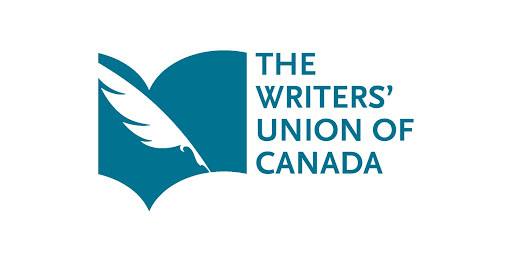
“Fetch” — short story, one of 11 finalists in a national field of over 800 entries: The Writers’ Union of Canada’s Short Prose Competition for Emerging Writers, (Ca), 2021
“Sweet Caporal” has been nominated by Rivanna Review, Charlottesville, Va. for a PUSHCART PRIZE, 2021
“The Rabid,” finalist in the 2022 PULP Literature Bumblebee Flash Fiction Contest, (Ca)
The 2022 J. F. Powers Prize for Short Fiction (US). This open competition drew over 400 submissions from around the world from writers in all stages of career development. “The Spring Kid,” was one of 28 longlist finalists and later advanced to the shortlist.
“The Mighty Hartski”: 2022 longlist for the Humber Literary Review/Creative Nonfiction Collective Society (CNFC) Canada-wide CNF contest
“Winter in the Sandilands” was named to the longlist for the 2022 PULP Literature Hummingbird Flash Fiction Contest, (Ca) Mitchell’s story, “Luck!” was on the shortlist in this same contest.
Several of these award-winners (highlighted in the list above) will be part of the forthcoming 2023 short story collection from At Bay Press, “Pinching Zwieback: Made-up stories from the Darp”
October 17, 2022
You Figure it Out
September 10, 2022
Editing
Editing is difficult but rewarding.
Difficult because you are erasing what you have created. You are subtracting from or changing the very thing that got you in the publishing game! Feels risky.
Rewarding because your changes create something new, all over again. Plus, the editor is your ally and a trusted source that comes to you from a place other than the rocky mass between your (my) ears. Thank God for that.
I am preparing 24 stories for publication in the spring. Several folks are weighing in on my work and each day there’s a knot in my shoulders and that night’s dreams are peppered with flickering replays of scenes from the collection. I wake up, make notes, fall back asleep and then laugh at my scribbled nonsense in the morning.
Here is a segment, edited recently. I offer it as a fast in situ peek at the crime scene. It is from the story, “The Peacemongers” and the topic is Canadian Mennonites during the wars, WW2 in this case, who deigned to be officially named “Conscientious Objectors.” This meant they would work in labour camps in Canada rather than serving in the military.
I thought of Corky’s uncle John who worked at Loeb’s lumberyard. He wore a red vest and a plaid shirt and stood behind the counter at the lumber desk. He was a big man with very white teeth and he would stand there smiling and writing down what you wanted to buy. My dad would always order lumber from him and it always started out the same way. Dad would say, “I need some two-by-fours,” and John would say, “how many and how long do you need ’em?” Dad would reply “twenty pieces and forever!” Same joke every time. Then John would yell for one of the yard boys to come and load the order into our truck, his pencil poised above the order form, looking at my dad over his glasses. “Twelve-footers,” or whatever length he needed, was the answer, served with a slanted smile.
‘
Dad said John had been in a C.O. camp during the war. He told my dad stories about it and how he made lifelong friends there. “Some were in the camp for other reasons, but most were there to follow the Word. That meant something to us and it was like our battle, to stay true to what we had been taught and to what we would teach our children.” I heard him talk about this to my dad and other men at the lumberyard. He stood straight up and looked into the eyes of the person he to spoke to. His voice was firm and he was not trying to convince anyone—he was just telling it. I was too young to understand everything, but thought he was telling the truth, exactly as he knew it and believed it.
.
I sometimes felt as though John and many others like him in our town believed, maybe secretly, that God was the biggest, toughest, most bad-ass Mennonite of them all. As if God would do all the fighting for us, and He would take no prisoners. I’m not sure that made our desire to live a life of pacifism any better. Possibly worse. It made God seem to me like a kind of bully—forever smiting Old Testament armies and kings that He didn’t like and constantly fighting with the Devil. Like Archie and Don, who fought almost every day after school at the corner of Hannover and Kroeker, accomplishing nothing but scuffed chins and bloody knuckles.[MT1]
[MT1] Added 22-09-10 in a moment of random inspiration.
—Considered but not promised, for “Pinching Zwieback” At Bay Press
July 25, 2022
Prosetry 22
Simplicity.
A summer night, where the thunderheads fist-bumped and parted ways, leaving our skies more Prussian blue than ash grey. Mosquitoes too were deported, sent elsewhere to do their whining — we think they all rented tiny jet-skis and rode off across the river.
Friends arrived just as the make-shift stage (soon to be returned to its rightful duty as a dock — rather than doc. — segment) was commissioned into service and we chatted and snacked and popped open bottles and cans and congratulated ourselves on being capable of being in such a place… in space and time, on Earth, today.
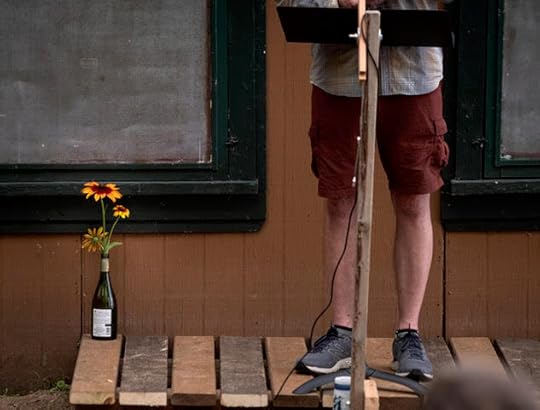
The loaner mic in friend & neighbour Jack Schellenberg’s hand-crafted and skookum-engineered mic stand crackled and away we went, led with panache by author Roger Groening. Curveball is Roger’s novel. (The author’s legs appear above, royalty-free; they’re the stems to the right.) He read a recent WIP excerpt that had us reaching for our decades-ago-discarded DuMauriers and l-o-l-ing and giggling through his vivid description of a wry woman tasking a man in a room without solutions.

Next came Leslie Wakeman who brought so much: snacks, wine, a beautiful quilt, handmade cards and her story, “The Goddess Cup.” We were gradually drawn in as her character’s embarrassment grew and our appreciation for Leslie’s deft, humourous-and-so-human touch led us along.
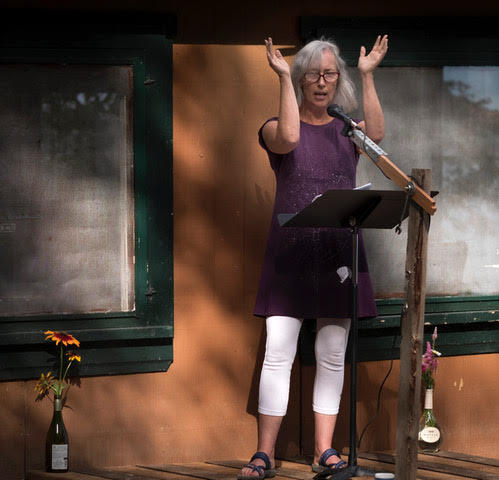
And then it was my sister Marnie Fardoe’s turn with a reading of a diary entry she had repurposed for us, for this perfect evening. She called herself a novice but we knew better. In addition, we got the family discount as Marnie gave us a quiet and moving performance of our sister Char Toews’ powerful poem, “Schedules are subject to change without notice”
[...] If the weather's that shitty it's kind of iffyYou're better off in the air or on the landOr living or dead, which is what my Dad didAnd me with a number of things plannedThen home in May, cutting the grass that first dayMowing and crying and thinking about worms and their dirt [...]Vid by Bonnie Friesen: https://www.facebook.com/580948274/videos/800154487823298/.
The perfect lead-in to Wes Friesen and his soulful playing and singing. Two beautiful Leonard Cohen songs following by a fascist-killing presentation of Deportee/Plane Wreck at Los Gatos, by Woody Guthrie.
Vid by Bonnie Friesen: https://www.facebook.com/bonnie.friesen.9/videos/1403462673497989/
.
More poetry, from Winnipeg poetess Phyllis Cherrett who wowed and dazzled, showing us her calm control over word and emotion, ending with the perfectly-suited dent de lion
 Phyllis Cherrett also gave a truthfully written acknowledgement of PLACE.
Phyllis Cherrett also gave a truthfully written acknowledgement of PLACE. I offered a pair of flash fictions, “New War — Old Technology” and “Luck!”, bookending our great friend Christiane Neufeld’s spelky delivery of poet Ceinwen Haydon’s Gooseberry, a repeat-performance from Prosetry 2019.
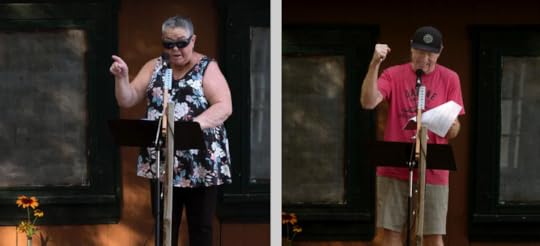
Two best-selling and truly masterful authors closed out the evening. MaryLou Driedger (Lost on the Prairie) offered us the first chapter of her WIP SEQUEL novel, set in 1936.
.
Writer, memoirist, author, instructor and warrior-woman Donna Besel did not dissappoint, giving us a thematic reading about a boathouse construction job set at nearby Brereton Lake. The story was a piece from her hit collection of short stories, “Lessons from a Nude Man.”
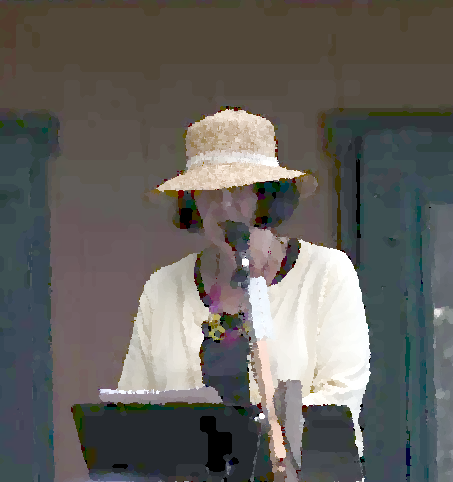 MaryLou Driedger as Gustave Flaubert would have seen her
MaryLou Driedger as Gustave Flaubert would have seen her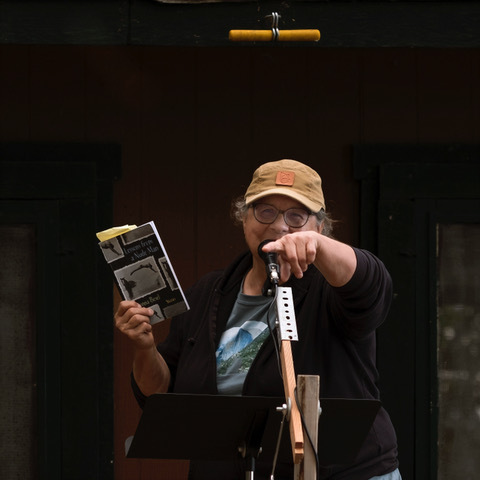 Donna Besel
Donna BeselThrough all of this, photographer Phil Hossack was doing his quiet and unobtrusive professional best, circulating among us, taking pictures that caught mood and feeling as much as light and dark.
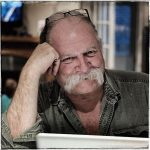 Phil Hossack
Phil HossackCheers to local artists Janice Toews, Gale Bonin, and Allison Rink whose brushwork filled the SheShed with brightness and colour.

NEXT YEAR: Book the day, slot it in and make it sacrosanct… we want you here to read and listen, to watch the clouds part, to smell the woodsmoke and taste the wine, to read, to hear and experience. We’ll make it more of an afternoon event — we’ll start at 1 PM and make it possible to leave without rushing before the sun goes down.
For those who stay, maybe we can set the boreal ringing with this unforgettable folksong refrain:
 Wes Friesen
Wes Friesen
…Goodbye to my juan, goodbye, rosalita,
Adios mis amigos, jesus y maria;
You won’t have your names when you ride the big airplane,
All they will call you will be “deportees”

 Janice Toews
Janice Toews Showtime minus 90 minutes
Showtime minus 90 minutes 2017 U.S. Inauguration crowd
2017 U.S. Inauguration crowd Ruth & Roger Groening
Ruth & Roger Groening 2019 Prosetry (July 20)
2019 Prosetry (July 20) MaryLou Driedger reading at Prosetry 2019
MaryLou Driedger reading at Prosetry 2019 Yet more Toews
Yet more Toews Leslie, Marnie, Bonnie
Leslie, Marnie, Bonnie SEE YOU NEXT YEAR! “Daj Boże!”
Janice and I reside in the boreal forest just north of the Fiftieth latitude in eastern Manitoba on Treaty 1 and 3 lands. Our property is situated on Métis land: Anishinabe Waki ᐊᓂᔑᓈᐯᐗᑭ http://www.anishinabek.ca/
SEE YOU NEXT YEAR! “Daj Boże!”
Janice and I reside in the boreal forest just north of the Fiftieth latitude in eastern Manitoba on Treaty 1 and 3 lands. Our property is situated on Métis land: Anishinabe Waki ᐊᓂᔑᓈᐯᐗᑭ http://www.anishinabek.ca/

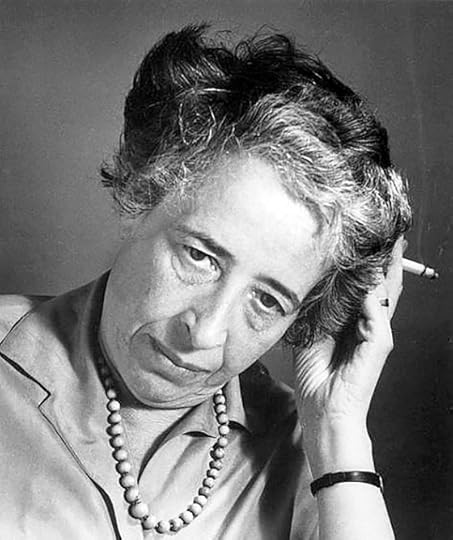
 Yup…
Yup…

